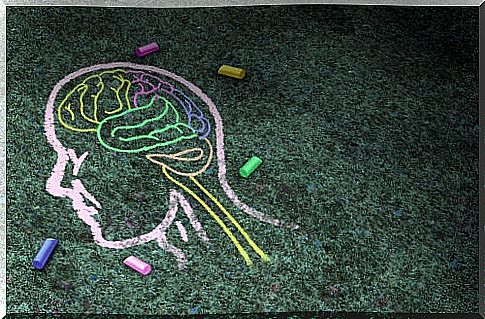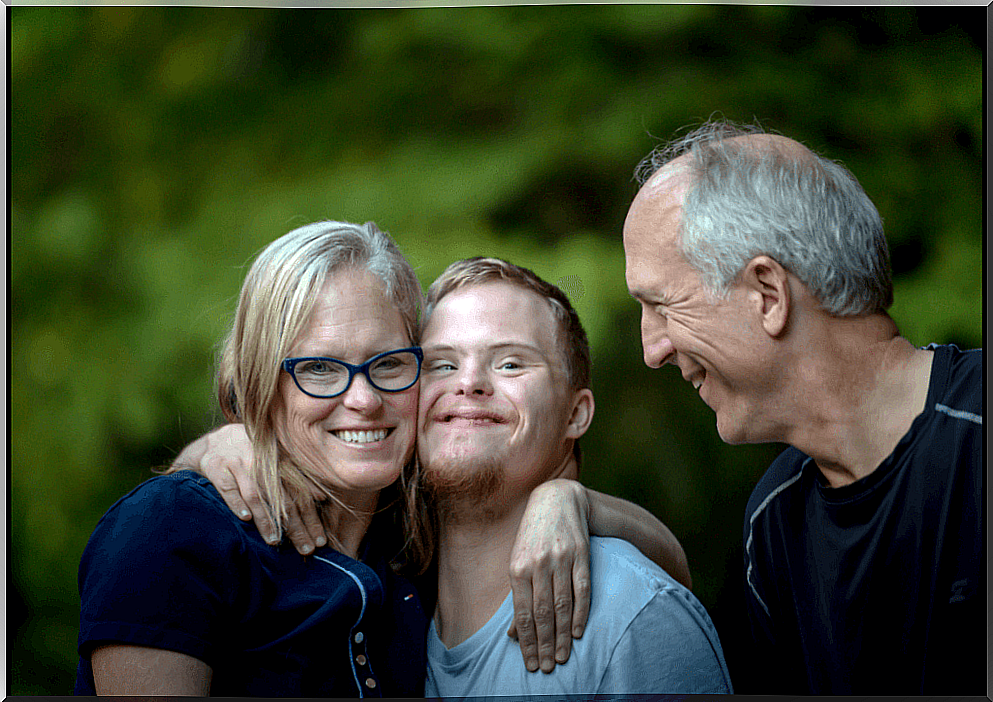The Scale Of Severity Of Intellectual Disability

Intellectual disability is usually generalized. However, did you know that there are four subtypes? In this article we present the scale of severity of intellectual disability that is used in the clinical field and its main characteristics.
Knowing it, we will be able to better understand how disability is evaluated and how a diagnosis is reached that frames it in one of the four identified subtypes.
What is intellectual disability?
It is a neurodevelopmental disorder, that is, a disorder that begins in childhood. It is characterized by cognitive decline and difficulty in adapting in conceptual, social and practical terms.

So, for the diagnosis to be made, these three characteristics must be present, which we will now describe:
- Cognitive impairment : difficulty in problem solving, planning, reasoning, etc. It is frequent when the minor has school difficulties or difficulties in planning home or play activities.
- Difficulty of adaptation (conceptual, social and practical): difficulty for personal autonomy, social responsibility, social communication, etc. It can be detected when the minor is forced to communicate with other people, whether they are his age or not.
- Start during development : the above should start from childhood.
Once detected, it is time to determine the severity of the disorder. To do this, we can go to the scale of severity of intellectual disability, where we will take into account not only the level of cognitive ability but also the ability to adapt.
What is the scale of severity of intellectual disability?
Taking into account that the cognitive capacity is altered, the evaluation is complemented with a qualitative analysis of the adaptive abilities of the subject. Thus, the scale is made up of three areas related to social adaptation:
- Conceptual domains : refers to the understanding and use of abstract thinking, for example, the understanding of symbolic language, the understanding and use of time, money, among others.
- Social domains : refers to the person’s socialization skills, who they do it with, the way they do it and the social tools they are able to use to express themselves.
- Practical domains : this area is characterized by personal care, hygiene, and job development skills, among others.
How to identify each level of intellectual disability?
Mild intellectual disability
On many occasions, this type of intellectual disability goes unnoticed. Most of these people achieve independence and are capable of making adaptations to lead a “normal” life. Thus, they can compensate for their lack of cognitive fluency with manual work or spending more time.
Their difficulties are often mistaken for disinterest, distraction, bad mood, lack of motivation, etc. Perhaps in some case this is the case, but it is better to go to a specialist to help us find out what is actually happening.
Also, they usually need more time to learn. Its main difficulties are planning, abstract reasoning, determining strategies, priorities, among others. He is able to obtain knowledge of language and arithmetic, but presents difficulties at the time of increasing complexity.
Socially they can communicate with their social environment in an acceptable way. However, disability can be perceived, in the case of children, at the time of play. Thus and ultimately, the person with this degree of disability can develop conceptual, social and practical skills, but at a more basic level of complexity than a person without disability.
Moderate intellectual disability
Unlike the previous one, his prognosis is more reserved. The weaknesses in their conceptual, social and practical skills are more evident. Here we can no longer speak of an “almost normal” independence.
Their learning capacity is more limited. Therefore, the lack of development in your conceptual skills greatly hinders your ability to work in the abstract. Thus, as soon as it is necessary to work with realities that are not tangible or with hypotheses, they feel lost. Furthermore, their performance in a social setting is also limited.
Their practical skills, in this diagnosis, depend more on external support. In practical activities (personal care, hygiene, domestic activities, etc.) they require a longer learning time to do them well.
Severe intellectual disability
In this diagnosis, significant conceptual learning is no longer carried out. Therefore, a complex symbolic understanding is not expected and a more material understanding is passed.
His main tools to function socially are simple sentences, as well as gestures and gesticulations. His social circle is further reduced to the family nucleus. The person becomes dependent on his practical activities, although less than on deep intellectual disability: it is a matter of degree.
Profound intellectual disability
Here we are talking about a completely dependent person. Their conceptual understanding is limited only to material communication, but also with difficulties.
Therefore, much of their socialization is possible thanks to mimicry, especially marked when they want or reject something they have seen. Most are able to follow simple instructions or procedures that are highly automated.
To do?
Now that you know the four subtypes of intellectual disability, you are in a position to be a “good early screener.” Thus, if you detect any of these profiles, it is best to consult a specialist.

Remember the above information to stay calm in the face of any suspicions. Stress or anxiety, for example, can affect the cognitive functions of anyone, and even more so of children. Behind poor academic performance or social disinterest, there is not always a disorder.









